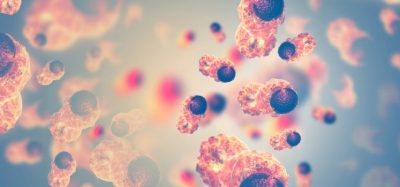Automated assessment of liver and cardiac toxicities in lead optimisation
Posted: 8 June 2018 | Tecan | No comments yet
This webinar, supported by Tecan, focused on the automated assessment of liver and cardiac toxicities in lead optimisation, using biochemical and human iPS cell assays.


Here, we capture the key questions asked during the webinar and the answers provided by Philip Gribbon, Assistant Head of Department, Fraunhofer IME ScreeningPort and Dr Ole Pless, Head of Biomarker and Translational Drug Discovery, Fraunhofer IME ScreeningPort.
The questions covered the technical challenges of establishing both homogenous biochemical, as well as cell-based, assays involving human induced pluripotent stem (hiPS) cells using the Tecan Fluent system. These applications represented distinct ends of the spectrum of assays employed within drug discovery.
Biochemical assay-related questions covered the configuration of the system for efficient assay methods with the questioners wanting to understand how easy it was to switch from one assay format to another in a reasonable time. Stem cell questions focused on the maintenance of sterile conditions for the extended periods necessary to run protocols, which can extend up to 12-14 days in cardiomyocyte differentiation.
Which protocols do you use to produce hiPS-derived cardiomyocytes, and is it possible to generate cell types other than cardiomyocytes on the Tecan Fluent system?
OLE PLESS: In the work presented, the differentiation reagents from Ncardia were used, since the protocols are straightforward. For example, sequential applications were made of three medium preparations (A, B and C) at defined timepoints. It is also robust, in that it produces regular beating cells, which are positive for markers including alpha-Actinin positive cardiomyocytes for more than 60% of treated cells. Therefore, it is a protocol that is well suited for automation. Since the discovery of hiPS cells, numerous somatic cell types from all germ layers have been produced by direct differentiation protocols. As such, other differentiation protocols can potentially be adapted, although in our hands we are yet to run these experiments under fully automated conditions. One problem that must be tackled is related to maintenance of sterility, since many differentiation protocols require more than 30 days to complete including regular media exchanges. Producing cardiomyocytes requires only short differentiation times between 8-12 days and was, therefore, a tractable system to start exploring how process automation could improve robustness and yield.
How easy is it to reconfigure the automation for different assays?
PHIL GRIBBON: For the P450 assay, assay automation is relatively straightforward for each individual cytochrome. It can become more complex when it comes to multiplexing more than one P450 in the same run, as then there is a clear need to align incubation and reading times etc, for enzymes with different specific activities. Overall, it is relatively straightforward to work with kits such as Cyp-glo and similar homogenous mix and read assay systems.
Automation can be complex to program and run for scientists; what is your experience with your system – did it take a long time to come up to speed with this system compared to others?
PHIL GRIBBON: The Fluent has a far greater degree of configurability for the liquid handling operations than some other systems we typically work with. This means that, for complex manipulations, a great deal of control is possible. However, the software is very visual and highly intuitive, so even non-expert users can access the necessary functionality following appropriate training. Access to very complex assay protocols can be reasonably achieved by technically proficient users and the system rewards the expert user with a great deal of flexibility when defining and running complex assays.
Related topics
Assays, Drug Discovery, Drug Discovery Processes, Hit-to-Lead, Lab Automation, Personalised Medicine, Screening, Stem Cells, Translational Science
Related organisations
Tecan
Related people
Dr. Ole Pless, Dr. Philip Gribbon








